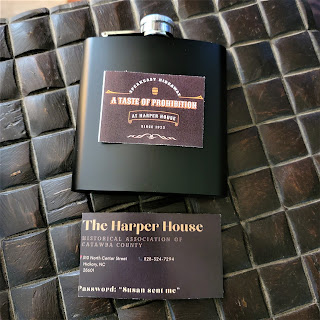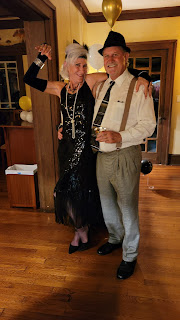Companion YouTube Video: https://youtu.be/oSsUBdUT2Y8
1925 - almost a century ago. As I began to research that time and compare it to today it was stunning how much the world has changed in these past almost 100 years! Most shocking was realizing that where Mother Earth had provided for 2 billion human beings in 1927.....
....she today provides for over 8 billion. 8 billion human beings in the same amount of space using the same finite well of natural resources.
But we human beings are a creative lot and even as we were obviously very energetically populating Mother Earth, we were offering our ideas to the rest of humanity. For example, in 1925 the Scottish inventor and engineer John Logie Baird demonstrated his first prototype television. The first public demonstration would be made the next year, the first mechanical colour television system in 1928, and the first electronic colour system in 1941.
Another creative project that took years to complete began when the State of South Dakota in the United States authorized a carving on Custer State Park land and dedicated Mount Rushmore as a national memorial in 1925.
The likeness of President Washington was completed in 1930, President Jefferson in 1936, President Lincoln in 1937, and President Roosevelt in 1939. The final drilling occurred in October 1941 and the project pronounced finished.
In the neighboring US State of Wyoming, also in 1925, Nellie Tayloe Ross takes office as Governor. The first woman Governor in US history.
1925 is solidly in the Jazz Age of the 1920s and 1930s, the setting of F. Scott Fitzgerald's "The Great Gatsby" written and then published that year. The setting overlaps the Roaring '20s and the Prohibition Era.
The Prohibition Era was a period from 1920 to 1933 during which a US nationwide constitutional law prohibiting the production, importation, transportation, and sale of alcoholic beverages was enacted. The alcohol industry was being curtailed by a succession of state legislatures, and finally ended nationwide the 18th Amendment to the United States Constitution. Prohibition finally ended with the 1933 ratification of the 21st Amendment which repealed the 18th Amendment.
And as human beings do at times, just because something was against the law does not make it off limits. The production and transportation of illegal alcoholic beverages, or bootlegging, was a huge dark industry and 1925 was the year Al Capone took over the Chicago, Illinois bootlegging racket. A history both dark and ripe for historians, writers, and playwrights for decades to come.
The curvy mountain roads of my state of North Carolina became the proving grounds for high-performance cars such as Ford's Model A and later the Model 18, driven by a daring "runner" with sharp driving skills. Eluding federal Prohibition agents along dirt, gravel, single-lane roads after dark often with their headlights turned off, became the basis for today's nationwide NASCAR races headquartered in North Carolina.
Harper House, Hickory, North Carolina
In Hickory, North Carolina, just a few miles west of my tiny farmhouse, is Harper House. Built in 1887 and owned by the Harper family from 1923 to 2000. Now under historic preservation, this Queen Anne style home retains much of the original interior including cherry staircase and stained glass, with some original and some reproduced wallpapers. A crystal chandelier, built by one of the Harper gentlemen as his hobby, hangs above the dining table.
The Historical Association of Catawba County has raised funds to restore and maintain both Harper House and Lyerly House, the Craftsman-style home next door to Harper House. It was easy to imagine a Taste of Prohibition Fundraiser and Gala evening encompassing both houses and featuring that fabulous Speakeasy. I was all in!
Make-up and Mischief
A month before the fundraiser, Harper House hosted a very fun event entitled Make-up and Mischief. It would be held at Lyerly House, the property adjacent to Harper House and part of the Hickory History Center.
It was here we were taught about and practiced with cake mascara, beauty marks, and smoky shadows. This is Sydney, Assistant Curator and main model for the evening. Isn't she glamorous?! And all of this while enjoying a charcuterie board and sipping the French 75 which would be served at the fundraiser. Here is a recipe....incredible!
With my new make-up experience I do something I have long wanted to do - purchase make-up from Besame Cosmetics, a luxury vintage make-up line in California.
This is a photo of my collection and the companion video (linked at the beginning of this post) has the full unboxing. There are many YouTube videos of people much more experienced than me using these fabulous cosmetics so I won't bore you with my learning curve. What I will say is that everything is truly sumptous, elegant, and long wearing. Even the containers are works of art!
Sewing a 1925 Fringe Front Dress
Of course fringe is synonymous with the Jazz Age! My search finds fringe originating around 3000 B.C. in Mesopotamia, or present-day Iraq. There are detailed sculptures, statues, and other evidence that tell us what this ancient embellishment was like.
http://www.fashionencyclopedia.com/fashion_costume_culture/The-Ancient-World-Mesopotamia/Fringe.html
As part of Native American culture, fringe was created when seams were clipped rather than being discarded and had the useful purpose in shedding water droplets from the garment.
Focusing on the 1920s reveals a glamorous golden age of fringe. The dresses were loose, cut from luxurious fabrics, and finished with a fringed trim. Hollywood has forever stamped into our collective psyche the flapper with her fringed dress moving and shaking to the dance. https://startupfashion.com/fashion-archives-the-history-of-fringe/
My dress will be from pattern #2501 1925 Fringe Front Dress by Decades of Style Pattern Company.
It is a simple and sophisticated vintage pattern.
I purchased this pattern in a costumer's destash group and while I don't see it on the current Decades of Style offerings, there are other fabulous 1920s patterns listed.
I'm using a very lipstick red lightweight satin and, of course, 12" red fringe.
The pattern has a back, back neck facing, front, front neck facing, and the applied crossover front.
The fringe will be sewn to the lower edge of the applied crossover piece and hangs beautifully to the hem at the lowest point and angles beautifully near the middle.
The front, applied front, back and facings are cut from the satin.
I had all good intentions of keeping this dress very very simple, I really did! Well, except for the fringe. It will serve another use for the 2023 Holiday Barbie who wears a simple red dress.
But there in the stash is an orphan piece of sequin rope trim which is the perfect color and will add a bit of glitter and glam to this monochromatic dress. After all, it's the Roaring 20s! And I can always remove it, right?
So the fringe and trim is sewn to the lower edge of the applied front.
And while I'm stitching, I continue to add the sequin rope trim along the entire edge of the applied front.
The corner of the applied front is pleated according to the instructions and tacked to the front as directed.
The front and back are sewn together at the side seams. There are instructions for a closure at the left shoulder but since the dress easily slips over my head, I simply sew the shoulder seams, add the facings, and understitch the facings so they stay tucked inside the neckline.
I do love the trim on the applied front and with a bit of the trim left I consider trimming the neckline and sleeve edges.
This might be fun! But it's a bit much with the pearl necklace.
The trim is added to the sleeve edges only. And with a narrow hem, the dress is finished!
The Perfect Touches
The dress is so simple with just that bit of shimmer and fringe. So to spice it up for the Taste of Prohibition Fundraiser it will be all about the accessories. I have a pearl fringe necklace, an incredible bag gifted me by a sweet friend, and red satin dance shoes.
I find a great fascinator from flydreamfeathers on Etsy.
Another pearl necklace with earrings and bracelet, fingerless white gloves, and white stockings and I'll be ready to sip cocktails and enjoy the evening.
Taste of Prohibition Fundraiser at Harper House
The night has arrived and the forecast is rain, rain, followed by, you guessed it, rain!
But we are ever hopeful and decide to get ready and see what happens. Patrick wearing his black sequin suspenders is also a perfect touch. *wink*
I start with a broken bracelet.
But no one will notice I'm bracelet-less when I have my fabulous Besame Cosmetics compact in hand.
All dressed up and no place to go! It's still raining but we decide to take a chance and right on schedule the rain stops as we pull into the parking area. And what awaits us? Clear skies and this!! Isnt she incredible?!
We're given our goodies which include a very usable flask with choice of sticker, and the Password to the Speakeasy which will be our first stop.
Our Speakeasy bartender for the evening and the menu of drinks including that delicious French 75.
I'm quite sure I know this gentleman's grandson.
There were gifts, drinks and food in both the Lyerly House and Harper House. Both houses were open to tour and enjoy at your leisure. There was a preview of the next Exhibition which was, appropriately enough, a history of NASCAR (and bootlegging). There were dance lessons, and a live band and dancing. The evening also included a silhouette by local artist Audrey Sherrill.
Everyone went all out in costume for the evening and we had our share of gangsters and flappers.
The evening was a complete joy! Magically, the rain waited until the evening was over. I wore my 1925 Fringe Front Dress sewn from a vintage pattern and, best of all, this was my first costumed event sonce October 2019. Both the world health crisis and my re-occurring leg injury had kept me housebound. It was wonderful to be out enjoying such a well-prepared and well-presented event for an excellent cause. A very special evening!!
A heartfelt Thank You! from Patrick and I for the wonderful time! It was obvious that many hours, many ideas brought to life, and a lot of love went into the Taste of Prohibition Gala. The Harper House is a true treasure as are all of you who keep her in trust for the community!
Love Always,
Jeanette
Historical Sew Monthly - February 2023 - Reality is Unrealistic
Challenge: Our modern, media-influenced perceptions of the past are often quite limited or inaccurate in comparison to the full picture that research reveals. Colourful peasant clothing? The prevalence of day caps? Bra-like garments in the Middle Ages? Make an accurate historical garment that defies our modern expectations of what was possible or commonly done!
What the item is: Fringe Dress
How it fits the Challenge: The Jazz Age is 100 years past but our modern perception of the clothing is heavily influenced by movies and the stereotype of the flapper in the heavily fringed dress. While fringe was certainly used, it was also used in styles other than flapper for both day and evening wear.
Material: Satin
Pattern: Decades of Style Pattern Company 1925 Fringe Front Dress
Year: 1925
Notions: 12" Fringe, sequin rope trim, thread
How historically accurate is it? Uses an accurate pattern with the luscious fabrics and trims of the era.
Hours to complete: 8 hours
First worn: For a Gatsby Fundraiser.
Total cost: $37
.jpg)











































.jpg)


















.jpg)







































































